Ford’s 1.0-liter Fiesta tops L.A. Auto Show debuts
By John Gilbert
LOS ANGELES, CALIF. — The Los Angeles Auto Show has become the vanguard of the “Big Four” auto extravaganzas in the U.S. By running from late November into early December, it has climbed to the pinnacle of anticipation for the domestic auto show season, which resumes with shows in Detroit in January, Chicago in February, and New York in April.
The 2012 Los Angeles show completed its run on Sunday, December 9 at the Los Angeles Convention Center, and amid an array of new high-mileage, low-emission, futuristic concepts, and useful family vehicles, it was Ford that jumped into the forefront, starting with a press introduction of its newly equipped Ford Fiesta, which will be coming out in several new forms, including one with a unique three-cylinder, 1.0-liter engine. We haven’t yet digested all of the 2013s, and Ford led off with some breakthrough technology for a 2014 model.
Domestic auto-makers, who used to reserve their biggest introductions for the Detroit show, were prominent in L.A. again, led by Ford’s tempting look at the European-issue Fiesta which will follow with U.S. distribution by the end of 2013. The high-tech 1.0-liter not only has only three cylinders, but it is one of Ford’s new “EcoBoost” family of smaller-displacement engines that improve fuel economy while also using turbocharging to deliver the power of a bigger engine. The 1.0-EcoBoost supplies, plenty of pep, even while driving through the mountainside highways above Santa Monica. The Fiesta’s subcompact body also is coming out in ST form, which will have a more potent 1.6-liter EcoBoost engine, prepared by the company’s SVT (Special Vehicle Team) high performance arm, assuring that high mileage also can include a kick.
Some of the highlights on the floors of the LA Convention Center, were unveiled at the two press days that preceded the show’s 10-day run. Hyundai once again upstaged its competitors with a party into the night after the first press preview day, at the Figueroa Hotel, complete with mermaids in the pool, and Jack Black performing some Tenacious D music inside.
Chrysler, which is now owned by Fiat, unveiled the new Dodge Viper V10 sports car, but left the biggest splash to Fiat, which not only brought out three new models of the feisty little 500 — a lengthened 4-door “L” model, a smaller pure-electric model with 80-100-mile range, and a rollback convertible top for the turbocharged Abarth model — but also offered a flurry of new and provocative television ads.
Fiat was the star of the last Super Bowl ad campaigns with its Fiat Abarth commercial, and the same show-stopping model not only was present and available for countless photos at the press introduction, but stars, with the cars, in several new commercials. Watch for one co-starring a scorpion, which is the symbol of the sporty Abarth, and has an apparent quest to attain bikini tops, and another clever one where a young man picks up his girlfriend and her parents in the new L 4-door, for a ride that includes a few tunnel-passing surprises. All of them should be appearing on TV soon, but in the meantime they attracted attention from all the neighboring booths at the L.A. show as they continued on the Fiat big screen.
Some new vehicles from Korean partners Hyundai and Kia were prefaced by apologetic comments from their executives for computing errors that the companies will compensate for, after leading to EPA gas mileage estimates that may have been high by a mile-per-gallon or two. Hyundai displayed the short and long versions of its new Santa Fe, which replaces both the existing Santa Fe and the longer Veracruz, and Kia showed an updated Sorento SUV, and a restyled Forte compact sedan.
An interesting reaction to ideas that might not have been good the first time around came from Toyota and Honda.
Toyota lengthened the RAV-4, popular compact SUV, by over a foot and added a third row seat and a V6 engine at its last major renovation. It has remained popular, but the rival Honda CR-V took over and became the most popular SUV on the market. Now, almost eight years later, Toyota has decided to shorten the RAV-4 a bit, and to do away with the V6 option to stick with 4-cylinders. Welcome back.
Honda came out with an all-new Civic for 2012, but it was sharply criticized for its low-rent interior, which was aimed at keeping the price down but came at a time when several prominent compact competitors had refined their interiors upscale. Honda executives have apologized for the mistake and said they would fix it. Art StCyr took the podium and made it sound as though the change was an indication of Honda’s quick-reacting engineering, but the hyperbole didn’t work. StCyr said the new Civic, which has a new look grille, similar to the Insight Hybrid, and softer, more luxurious features plus back-up cameras and other amenities for only $160 more than the short-lived 2012, was in the design stages even as its predecessor was brought out.
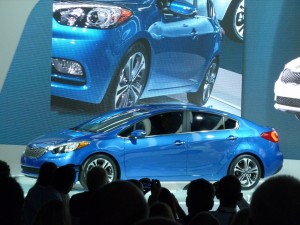
The all-new 2012 Honda Civic is supplanted by a new-look 2013 model with new grille, interior amenities.
“We didn’t have time to get all the features installed,” he said.
“Why not wait another year, then?” he was asked, while it was pointed out that designers always start on the next generation as soon as one is introduced.
“Did the 2012 model have to happen in order to force the new 2013?” StCyr was asked.
“I don’t know what you mean by that,” he said.
“Well, has Honda ever before brought out an all-new model, knowing it was going to replace it in a year?”
“No,” StCyr answered.
I told StCyr later that I wasn’t trying to be chippy, but those were questions that needed answering. He thanked me and said they were valid questions and he was surprised nobody else asked them. His best point was that those who bought 2012 models didn’t buy bad cars; the new one is just improved.
Mazda unveiled its new Mazda6 midsize sedan, with a 2.5-liter Skyactiv 4-cylinder, reiterating that all its new engines will have Skyactiv technology, which is a thorough renovation of the interior of the engine, including the block, with longer stroke, smaller bore, and special intake and exhaust systems, plus new transmissions, in order to extract significantly higher fuel economy. The Mazda3 started with a 2.0 Skyactiv, and the new-for-2013 CX-5 compact SUV houses the full manifold system and will outperform the sporty Mazda3 on a race track, while getting mid-30s mpg. A redesigned CX-9 full-size SUV also now wears the signature blunt nose of the CX-5 and Mazda6. Mazda officials reiterated their intention to bring in a new 2.2-liter turbo-diesel for the new sedan and SUV entries.
Volkswagen offered a new cabrio (convertible) model of its Beetle compact, and showed off the impressive new Jetta Turbo Hybrid, the industry’s first attempt at combining a small (1.4-liter) engine with turbocharging and hybrid technology.
Acura unveiled its RLX, which is the name the brand’s luxury leader will now use, replacing RL. It has all-wheel drive available, and the latest all-wheel steering, called “P-AWS.” Naturally, the language exchange will have fun with the chrome “Paws” sign on the rear. Better than “Pause,” probably. A new three-motor hybrid is coming soon. Acura also displayed a beautiful new concept roadster, and displayed the near-finished version of its new NSX sports car.
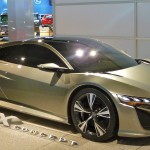
Acura's high-tech NSX is nearly ready for production, while the brand's upscale halo car (right) will be the RLX, replacing the RL.
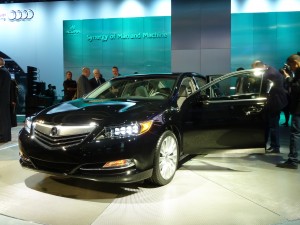 A new Land Rover model, and a pair of spectacular looking new Jaguars shared a stand, as the two British makes now are owned by Tata Motors of India. Porsche brought out a new and longer Cayman sports coupe.
A new Land Rover model, and a pair of spectacular looking new Jaguars shared a stand, as the two British makes now are owned by Tata Motors of India. Porsche brought out a new and longer Cayman sports coupe.
Audi’s U.S. president Scott Keogh spoke about his company’s commitment to turbo-diesels and said its A3 and Q7 TDIs had done so well, the company will also bring in TDI models of the A6, A7, and A8 sedans, and the midsize Q5 SUV. He said the company vowed to prove the TDI engines get 30 percent better fuel economy, lower particulate and evaporative emissions, and lower nitrous oxides, and that in the last year, 33 percent of the Q7 SUVs were sold with TDI engines, and a whopping 55 percent of A3 compacts went out of showrooms with TDI power. “It allowed the U.S. to save $26 million in gasoline costs, and sacrificed nothing,” Keogh said, calling the TDIs with their fantastic torque thrust “cars without compromise.”
BMW also had a flashy new rear-engine concept sports car that was a major attraction. The German company continues to produce vehicles that are the standard of the industry, including the current 3-Series that is a Car of the Year finalist, and the new X1 compact SUV that is a Truck of the Year finalist.
Chevrolet, which has its new subcompact Ronic and smaller Spark on the market, showed its new Impala and Malibu sedans, which look quite similar, although the Impala is larger. But Chevy held off displaying the new Corvette, which reportedly is being held in reserve for Detroit.
Avalon now All-American luxury/sport sedan
By John Gilbert
ANN ARBOR, Mich. — During three restyling generations in its 17 years, the Toyota Avalon never distinguished itself as a dazzler, even though it never qualified to be an ugly duckling, either. Its heritage was as an elongated Camry-with-bling, but that image will be shattered forever by the 2013 Avalon, which soars, swan-like, with a combination of stunning attractiveness and breakthrough engineering.
First impression is striking, particularly for a car that began existence in 1995 as the replacement for the brick-shaped Cressida. A case could be made that the new Avalon is the most beautiful sedan ever dreamed up by Toyota, starting with a new grille that has an aggressive look, and with lines that flow front to rear over a low belt-line, meeting at a distinctive rear.
Akio Toyoda, the company’s young and performance-oriented chairman, was reportedly so impressed when he saw the proposed U.S. design that he ordered the car built without changing a thing. It was, even if it meant giving up a couple of inches of rear headroom to accept the sleek roofline.
If this indeed is a standard of design that will influence future Toyota sedans, we can celebrate it for more than just replacing Avalon’s comparatively boring predecessors. Previous Avalons were always competent and pleasant, but stylistically they were ho-hum appliances, just enough to satisfy Camry buyers seeking to move upscale without appearing pretentious by buying a Lexus. Toyota’s upscale Lexus line has redesigned its whole fleet, but the new Avalon gives up nothing to them in design.
Under that shapely body, the Avalon further takes wing by achieving quiet comfort — which is no surprise — complemented by enough handling agility to gain some All-American sportiness — which is.
The Avalon presented an additional challenge because it was the first time allowed any new vehicle to be totally drawn, designed, engineered and built by its expansive U.S. outlets. Instead of being started in Japan, the fourth-generation Avalon was designed by Calty Design in Newport Beach, Calif., and Ann Arbor, Mich., engineered at the Toyota Technical Center in Ann Arbor, and is being built at the Georgetown, Ky., plant.
“Back in the ‘80s, all Toyota vehicles shipped to America were designed, engineered and built in Japan with little or no input from the U.S.,” said Bill Fay, Toyota general manager, tracing the time line of increased building in U.S. facilities. “We’ve just passed a very special milestone for Toyota in the U.S.A. — our Kentucky plant has built our 25 millionth North American vehicle. Over the last 26 years, this represents a direct investment of nearly $24 billion, and the creation of 365,000 jobs in the U.S. But this Avalon is a real game-changer.” Read more
New Jetta combines turbo pep with hybrid mpg
By John Gilbert
SANTA FE, N.M. — Driving down from the 8,000-foot altitude of Santa Fe, we descended toward a curve so I flicked the new Jetta’s shift lever and downshifted to fourth gear, and when the curves tightened up, I dropped it down to third, both to slow a bit and to be in the power band for accelerating out of the curve.
Coaxing a good-handling sports sedan to trace those curves can be exhilarating fun, especially when deploying a direct-sequential gearbox to instantly respond. This was not a GLI, although its handling and performance created a fair impersonation of that hottest of Jetta models.
This was, in fact, the Jetta Turbo Hybrid, all new for 2013. What makes it unique is that by using a smaller-displacement 1.4-liter 4-cylinder engine, with direct-injection and turbocharging, the power of a larger engine suddenly is joined by the economy of a smaller one. And then it adds a lithium-ion battery pack as Volkswagen’s first-ever hybrid sedan. But the emphasis retains the fun-to-drive aspect of a true sporty car, even while getting hybrid-class fuel economy.
Without question, I enjoyed pushing the Jetta harder through the curves than my more conservative co-driver. In our brief driving, I found spots to go from 70-75 miles per hour and otherwise drove at 50-65, where speed limits required it. My feeling was that the power and stability was up there close to high-performance stature but without the uncompromising harshness sometimes found with sports-car rigidity. On the economy side, I finished my fairly hard segment and then clicked the computer until I saw the number: I had averaged 47.5 miles per gallon.
That was extremely impressive, although an hour later, my co-driver got 50.8, on mostly sustained highway driving. Our conclusion was that the Jetta Turbo Hybrid is either an extremely economical performance car, or an amazingly high-performing economy car.
“If you want to help this planet, building a green car is not enough,” said Rainier Michel. “It must also be appealing to look at, and fun to drive.”
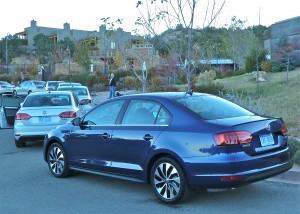
Jetta is aimed at the crowded compact class, but now is loaded with five different engine variations.
Michel is the very German vice president of VW marketing strategy, and he drives a high-performing Golf R in his private life, meaning it’s impossible to extract his urge for fun-to-drive motoring from everyday driving. We should all be thankful for that.
It’s important to connect all three words — Jetta, Turbo and Hybrid — because Volkswagen had never built a hybrid sedan before, and nobody has ever hooked up a turbocharged engine to a hybrid battery pack. VW has done both, to assure that the Jetta Turbo Hybrid would meet and exceed both hybrid and high-performance aspirations. Read more
Pathfinder expands Nissan’s midsize SUV presence
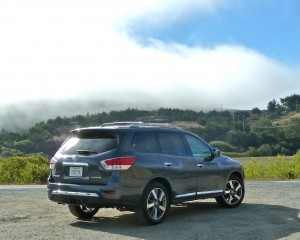
Larger, roomier Pathfinder adds comfort and convenience for 2013, as clouds roll in from San Francisco.
By John Gilbert
CALISTOGA, CALIF. — With so many sport-utility vehicles on the market, anything and everything is available, from 7-passenger family haulers, to off-roaders, to freeway cruisers, to sport and tow vehicles. Nissan makes SUVs for all those niches, but the fourth-generation 2013 Pathfinder will apparently attempt to cover all them in a single bound.
The 2013 model has a shapely form that bears little resemblance to the previous three generations, which spanned 26 years as solidly successful SUVs. The new one is longer, lower, wider and lighter, and takes the breed in a new direction with greater comfort, versatility, and better fuel economy.
The first Nissan Pathfinder was a sturdy all-terrain sport-utility vehicle that came out in 1986 and became an industry staple for 10 years. The second generation Pathfinder hit showrooms in 1996 and lasted until the third, which ran from 2005-2012. All of them maintained the family resemblance and were comfortable and efficient all-weather family vehicles.
The midsize SUV segment has made some major moves, however, capturing the younger family market where buyers are worried more about connectivity and amenities than they are in working only as a sportsman’s vehicle. It’s still fashionable to tow the fishing boat or camp trailer and cover the rugged road to the lake, but taking the kids and their teammates to practices, games, or out-of-town tournaments in comfort while watching DVDs or listening to MP3 music has taken on a greater importance.
“We think we’ve hit the sweet spot for people with families,” said Rich Miller, Nissan’s product manager for the U.S. and Canada. “For them, having two rows of seats might be too small, and having a third row that is readily accessible is important. We also wanted to maintain the power we have and the drivability, but we needed to improve our fuel economy. We also think our buyers will give up a little in towing for more fuel economy.”
At that, the Pathfinder still tows 5,000-pound trailers, although that’s down from 7,800. Two reasons for that: Nissan still sells the larger Armada with its V8 for heavy-duty towing, and the new Pathfinder gives up its previous 4.0-liter engine for the 3.5 V6, and uses front-wheel drive when it’s in 2-wheel-drive mode for the first time, compared to the previous rear-drive. Read more
Sentra takes Nissan out of the park for 2013
By John Gilbert
SAN FRANCISCO, CALIF. — In Nissan’s ever-expanding universe of cars and trucks, the compact Sentra has been relegated to something akin to a support role. Sort of like a durable and dependable infielder or utility player who is both vital to success and easily overlooked while the stars hit home runs and make the big headlines.
World Series time in 2012, however, is the perfect time to find out how invaluable such performers are in clutch situations. The San Francisco Giants were winning their way to a World Series date with the Detroit Tigers when Nissan just happened to summon auto media types to San Francisco for the introduction of both the 2013 Sentra and Pathfinder, which could be game-breakers in far-reaching segments. We’ll deal with the Pathfinder at another time, but for now let’s focus on the Sentra, to coin a phrase.
The Sentra has ranged from drab to nondescript throughout its steady sales lifespan, suddenly emerges as a stylish and feature-filled compact, with neat lines, abundant features, and fuel economy that is exceptional enough to challenge segment front-runners such as Civic, Elantra, Focus, Mazda3, Corolla and Cruze.
We drove the Sentra models around San Francisco, then across the Golden Gate bridge and up to Napa Valley, where we made the transition the following day to be immersed into the Pathfinder lifestyle for an intense though brief examination of both vehicles. We’ll deal with the Pathfinder in due time, but for now, let’s examine the Sentra.
Without suggesting the Sentra has been confined to benchwarmer status through its first six generations, there is no doubt the unveiling of the seventh generation Sentra for 2013 is stepping up to the plate with aspirations to deliver a rally-extending hit for Nissan. It starts out with styling, which borrows a bit from the bold designing touches of the just-introduced midsize Altima for a contemporary and decidedly upscale appearance.
Go back through its history, and Generation 1 (1982-86), 2 (’86-90), 3 (’91-94), 4 (’95-99), 5 (2000-06) all were sturdy and efficient but had styling that wasn’t what you’d write home about. Generation 6, which came out for 2007, finally indicated that Nissan designers realized they might round third and head for home with some edgier looks. Still, it was eclipsed by a Civic that delivered a Car-of-the-Year Grand Slam, while Mazda3 also was a big hit. Hyundai’s Elantra, the 2012 North American Car of the Year, intensified the segment’s competition with a great package, and an all-new global Focus and Cruze have heightened awareness of the compact segment this year.
So the new Sentra has to fight for everyday playing time or be rendered to the minor leagues of consumer awareness, and the 2013 raises the potential of a nameplate that has sold over 4.3 million cars over the past 30 years, with all generations made in the U.S. To meet basic requirements of the new-age compact segment, the Sentra offers fuel economy that can easily eclipse the EPA estimates of 30 mpg city and 39 highway for a 34-miles-per-gallon combined average, and offers its new styling and interior at prices that range from a base of $15,990 to $20,000 for five different models.
John Curl, the senior marketing manager of Nissan’s product planning, says the new car has “class-above technology,” to live up to an exterior that cuts a profile much more sharply defined and stylish than any of its soap-carving predecessors. A character line carved into its sides amplify its lower and more forward-leaning stance, and obviously revised proportions.
Front headroom and legroom measure the biggest among compacts, and extending the rear overhang allows a 15.1 cubic foot trunk capacity (2 cubic feet larger than 2012), plus rear-seat legroom that is more than an inch more than any competitor, at 37.4 inches. The whole package is enclosed by a body built with more high-strength steel, for a stronger structure that is also 150 pounds lighter. Read more


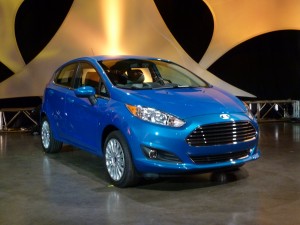
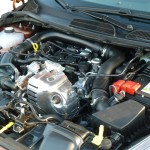
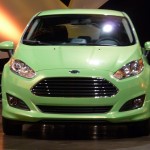
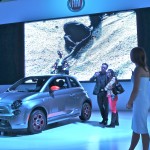
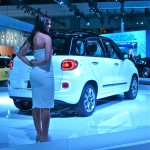
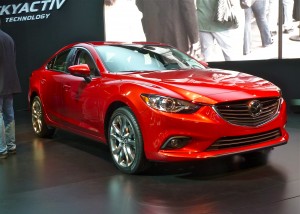
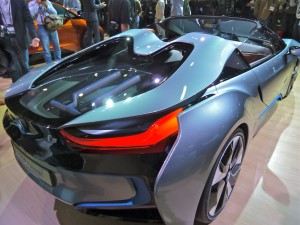

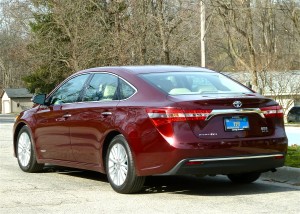
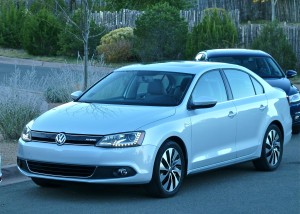
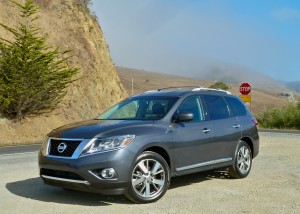
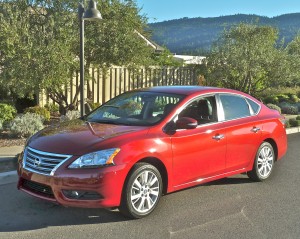
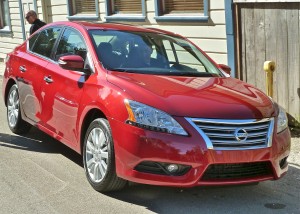
 John Gilbert is a lifetime Minnesotan and career journalist, specializing in cars and sports during and since spending 30 years at the Minneapolis Tribune, now the Star Tribune. More recently, he has continued translating the high-tech world of autos and sharing his passionate insights as a freelance writer/photographer/broadcaster. A member of the prestigious North American Car and Truck of the Year jury since 1993. John can be heard Monday-Friday from 9-11am on 610 KDAL(www.kdal610.com) on the "John Gilbert Show," and writes a column in the Duluth Reader.
John Gilbert is a lifetime Minnesotan and career journalist, specializing in cars and sports during and since spending 30 years at the Minneapolis Tribune, now the Star Tribune. More recently, he has continued translating the high-tech world of autos and sharing his passionate insights as a freelance writer/photographer/broadcaster. A member of the prestigious North American Car and Truck of the Year jury since 1993. John can be heard Monday-Friday from 9-11am on 610 KDAL(www.kdal610.com) on the "John Gilbert Show," and writes a column in the Duluth Reader.